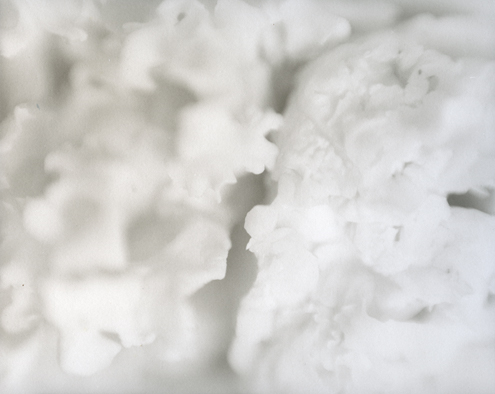
Ethereal 3 – Platinotype: Platinum/ Palladium
Platinotype photographs are distinguished by a matte surface and subtle tonal gradations, the image is embedded in the fibre of the paper. Because of the tonal range and surface quality of platinum prints, many fine art photographers of the late 19th and early 20th century preferred the process over gelatin silver prints. The platinum printing process was developed in the 1870s, and commercially made platinum papers were available until the rising costs of platinum during World War I made the process prohibitively expensive. Platinum prints were replaced by the similar, but less-expensive, palladium prints. Today platinum and palladium prints are widely considered the princes of the photographic medium, and the greatest expressions of fine art photography. Printing in platinum and palladium is acknowledged as the summit of early print processes. Photographs are formed in a permanent ‘noble’ metal, graduated in tones of neutral grey or warm sepia offering luminosity in the high values. Platinum and palladium are used individually, or mixed in any proportion, controlling the image hue and contrast. https://www.mikeware.co.uk/mikeware/Platino-Palladiotype.html
About Keiko Goto: Japan/ Australia. Keiko arrived in Australia with her father who was involved in The Snowy Mountain Scheme’s final project, Tumut 3 Power Station in 1970 and became a part of the multicultural Australian immigration history. Living abroad in Japan, UK, and Russia, Keiko established a vibrant international background characterising her love of nature and people living on the land. A film-based photographer with works featured in keikogotophotography.com. The beauty of the monochrome world enhanced by the added character of the piece by piece hand printed fibre prints is timeless. Keiko’s works have been exhibited at galleries in Australia and China.
BACK TO GALLERY WALK THROUGH
